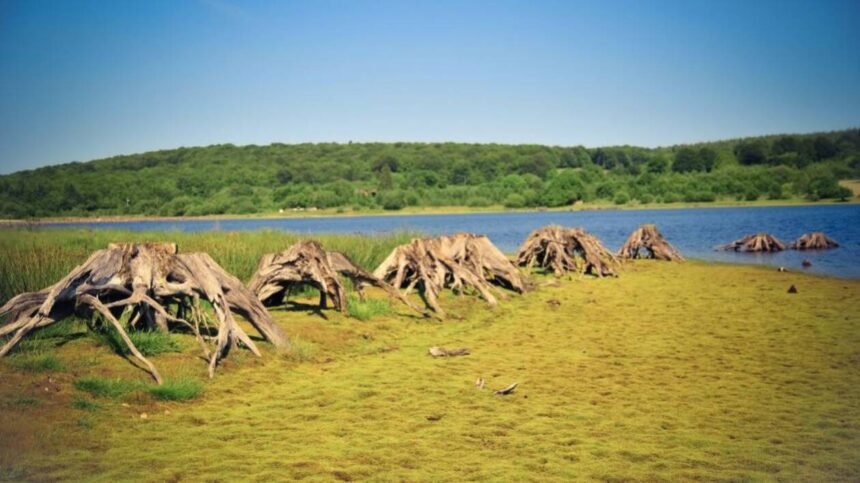When people think about natural beauty, they often imagine mountains, lakes, or the sea. Yet, some of the most peaceful and inspiring landscapes are found along small streams that quietly shape the land around them. One such example is the ruisseau d’avenelle, a charming waterway that reflects the harmony between nature and human history. Although it may not be as famous as larger rivers, the ruisseau d’avenelle holds great cultural, historical, and ecological importance.
The Meaning Behind the Name
The word ruisseau in French simply means “stream,” while Avenelle is believed to be derived from local roots, possibly linked to early settlements or natural features of the area. Together, ruisseau d’avenelle describes more than just a stream; it symbolizes a connection between nature and community. In many villages across France and Europe, small waterways like this one played a vital role in everyday life, from providing fresh water to powering mills.
A Natural Treasure
The ruisseau d’avenelle is not a vast or roaring river but rather a gentle stream, winding through fields, forests, and small towns. Its waters are clear and often home to fish, amphibians, and insects that depend on clean freshwater ecosystems. The surrounding plants, including willows, reeds, and wildflowers, add color and life to the stream banks. Birds are often seen nearby, making the area around the ruisseau d’avenelle an ideal spot for nature lovers.
Walking along the stream, one can experience the soothing sound of flowing water, which has a calming effect on the mind. This is why places like the ruisseau d’avenelle are often described as “hidden gems.” They provide a quiet retreat for those who wish to escape the noise of modern life and reconnect with nature.
Historical Importance
In earlier centuries, streams such as the ruisseau d’avenelle were central to human activity. They provided water for farming, washing, and drinking before modern systems were created. Small mills were sometimes built along their banks, using the stream’s energy to grind grain into flour. Even today, old stone bridges and mill ruins near the ruisseau d’avenelle tell stories of the past, showing how important the stream was to local communities.
Villagers would gather near the stream for festivals, laundry days, or simply to share stories. For many, the ruisseau d’avenelle was more than a water source; it was a place of connection and tradition.
Ecological Role
Beyond history, the ruisseau d’avenelle continues to play an important role in the environment. Small waterways act as lifelines for biodiversity. They provide drinking water for animals, allow fish to breed, and keep the soil fertile. The vegetation along the stream prevents erosion and protects farmland from flooding. In today’s world, where climate change and environmental challenges are pressing issues, protecting streams like the ruisseau d’avenelle is essential.
Ecologists often stress the importance of preserving these small rivers because they contribute to larger ecosystems. What happens in a stream can eventually affect bigger rivers and even oceans. Pollution, overuse of water, or the destruction of natural banks can damage the balance of life. By keeping the ruisseau d’avenelle clean and protected, communities are also safeguarding their future.
Tourism and Relaxation
Today, the ruisseau d’avenelle attracts visitors who are interested in hiking, photography, or simply spending time outdoors. Nature trails often run near the stream, offering picturesque views and opportunities for picnics. Local tourism boards sometimes highlight the ruisseau d’avenelle as part of cultural or eco-friendly travel experiences.
Cyclists, walkers, and families enjoy the calm atmosphere the stream provides. Unlike crowded tourist attractions, the ruisseau d’avenelle allows for personal reflection. For many people, sitting by the water and listening to its flow is more rewarding than any busy destination.
Local Legends and Stories
Like many streams in Europe, the ruisseau d’avenelle has inspired tales and legends. Some locals believe the stream has healing powers, while others recall stories of travelers who followed its course to discover new lands. Folklore often ties streams to mystery and magic, as they are seen as paths that connect villages, forests, and hidden places.
While these stories may not be scientifically proven, they add charm to the ruisseau d’avenelle. They remind us that natural landmarks are not only physical places but also part of cultural imagination.
The Future of the ruisseau d’avenelle
Looking ahead, the preservation of the ruisseau d’avenelle is crucial. Local communities and environmental groups often take action to clean the water, maintain walking paths, and educate people about the importance of small streams. Simple actions, such as reducing litter and protecting nearby plants, help keep the stream healthy.
Schools sometimes bring children to visit the ruisseau d’avenelle, teaching them how ecosystems work and why protecting water is important. These educational efforts ensure that future generations will value the stream as much as those before them.
Conclusion
The ruisseau d’avenelle may not be a mighty river or a world-famous landmark, but its significance is undeniable. It represents the bond between humans and nature, history and progress, tradition and modern life. From providing water to inspiring legends, the ruisseau d’avenelle continues to be a symbol of peace and natural beauty.
Visiting such a place allows us to appreciate the small wonders of the world. It reminds us that even the quietest streams have powerful stories to tell. Protecting and celebrating the ruisseau d’avenelle is not only about saving a piece of nature—it is about honoring the heritage and future of the community it nourishes.





